Introduction: iPad Air vs iPad Pro for drawing: Which is better for artists and creative professionals?
In this comparison, we’ll explore the differences between the two popular iOS based Apple tablets and help you decide which iPad is right for your drawing, graphic design and creative tasks.
Also see: iPad Air vs Pro for drawing: Which is better? (Artist Review)
See the 5 Best iPads for Artists (Drawing, Digital Art, and more)
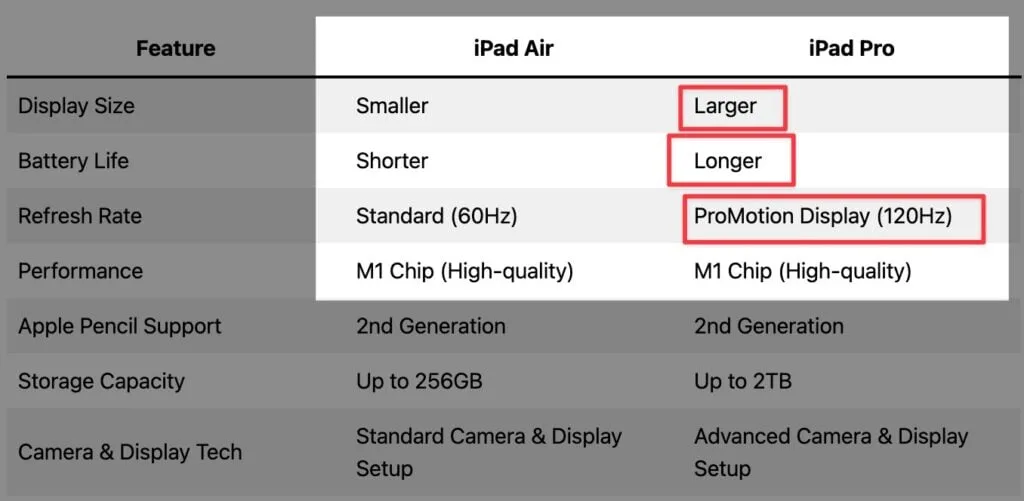
Read on to discover which device stands out for its performance, features, and overall drawing experience.
- Key Takeaways – iPad Air vs iPad Pro for drawing
- Understanding the Artistic Perspective
- Key Differences between iPad Air and iPad Pro for Artists
- Comparing Display Quality and Performance
- ProMotion Display and its Impact on Drawing Experience for iPad Pro users
- iPad Air vs Pro – Deep dive into the differences for drawing
- A Look at Pixel Density and Display Sharpness
- Apple Pencil Performance on iPad Air and iPad Pro
- Exploring Performance – The Role of Apple M1 and M2 Chips
- Choosing the Right Model – Storage Options and RAM
- Beyond Drawing – Cameras, Sound, and Connectivity
- Portability and Usage – Evaluating Battery Life and Weight
- Pricing Showdown – iPad Air versus iPad Pro
- Accessories for drawing on the iPad
- What is Pro Motion display on the iPad Pro and why is it good for drawing?
- Can iPad Air and Pro run the same drawing apps?
- My Experience testing the iPad Air Pro on Procreate and Krita
- Camera Features: Relevance for Creative Work
- Bottom Line: iPad Air or iPad Pro for Drawing, Artists, and Graphic Design?
Key Takeaways – iPad Air vs iPad Pro for drawing
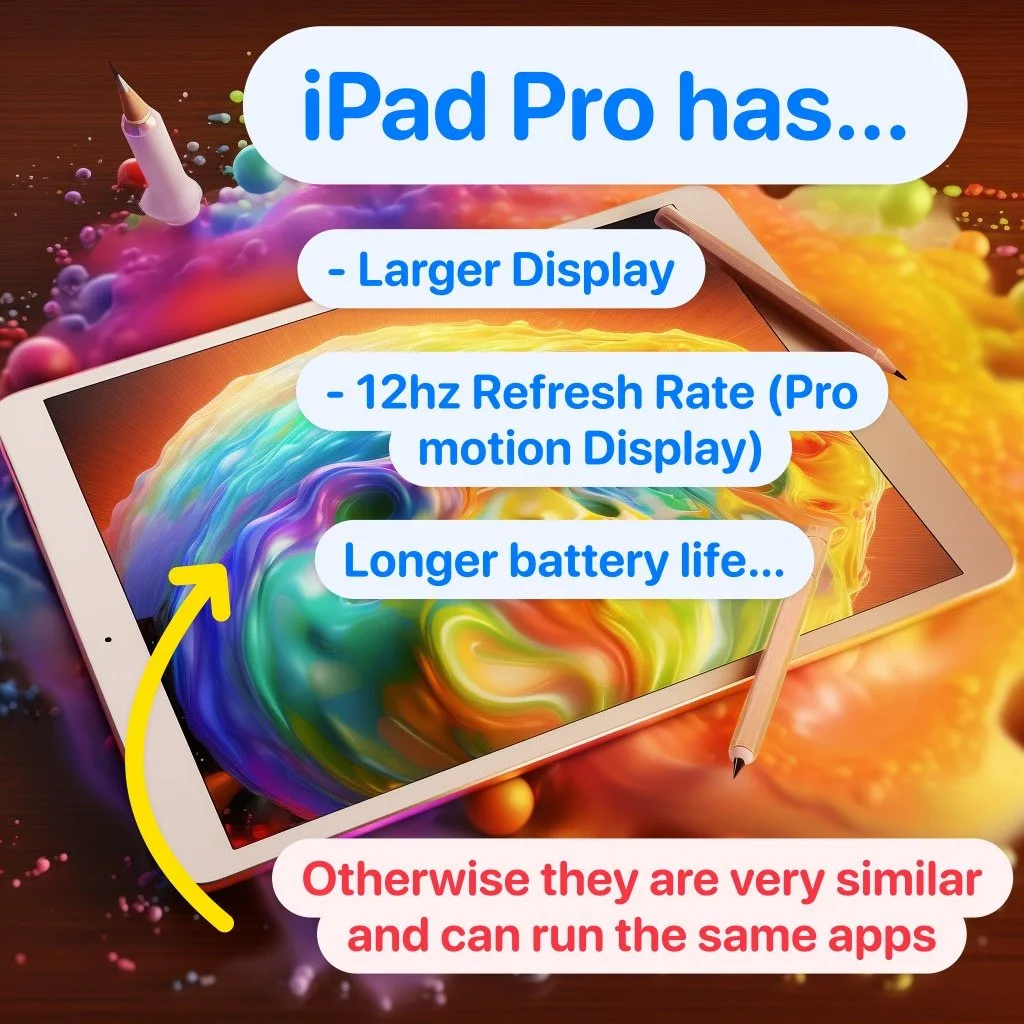
Key Differences between iPad Air and iPad Pro for Artists? The Display size is larger on Pro… and the battery life is longer on Pro. The Pro model also has Pro motion display (120hz) refresh rate, so it’s overall faster in terms of performance

| Image | Title | Price | Prime | Buy |
|---|---|---|---|---|
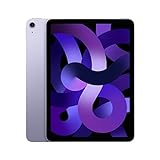 | Apple iPad Air (5th Gen) | PrimeEligible | View on Amazon | |
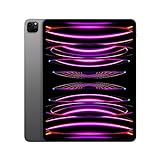 | Apple iPad Pro 12.9-inch (6th Gen) | PrimeEligible | View on Amazon |
- Both iPad Air and iPad Pro come with the same powerful M1 chip, ensuring high-quality performance.
- The latest iPad Air supports the second-generation Apple Pencil, offering the same drawing experience as the iPad Pro.
- iPad Pro models have a larger storage capacity, up to 2TB, whereas the iPad Air is available with a maximum storage of 256GB.
- The iPad Pro has a better camera setup and more advanced display technology than the iPad Air, but if you’re only drawing, this is likely a less crucial feature for you.
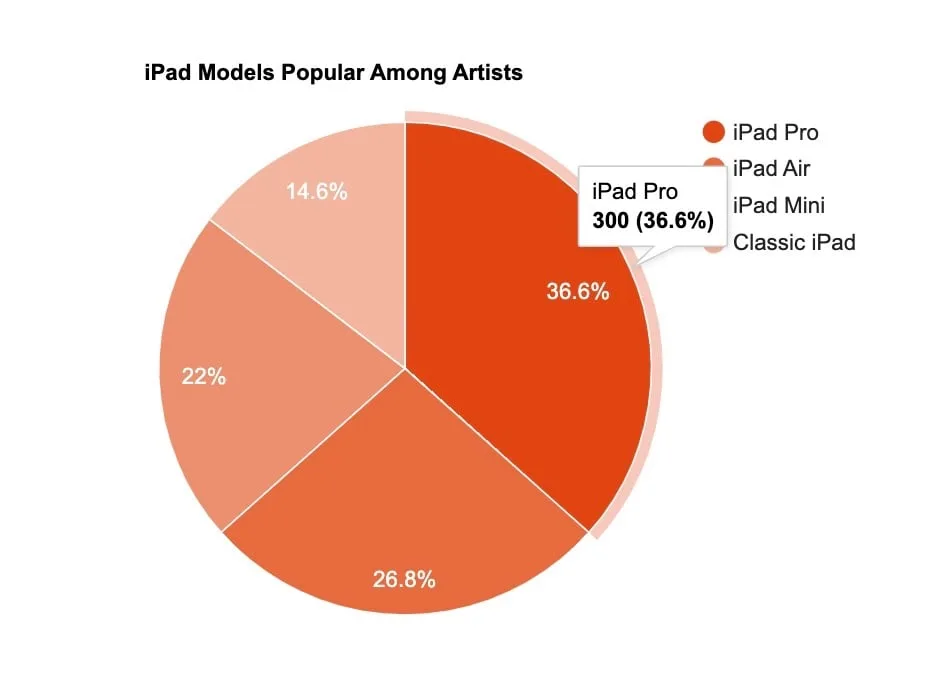
Related: 7 Best Stylus for iPad Air (Drawing, Writing, Notes)
Understanding the Artistic Perspective
As an artist, selecting the ideal tablet for your creative endeavors requires thorough consideration of several factors that directly impact your work.
The device’s display quality, processing power, and compatibility of accessories are some of the most critical aspects… this is why many artists use a drawing tablet that connects to a laptop.
We’ve compared iPad vs Drawing Tablet for Artists as well.
When comparing the iPad Air and iPad Pro, it’s essential to evaluate the differences in specifications and performance.
One advantage of both devices is that they’re compatible with the Apple Pencil 2, providing an unparalleled drawing experience.
Side note: Choosing between the iPad Air and iPad Pro requires an understanding of the various features and design aspects that you specifically need (for example, if you need procreate or a 3d modeling app, you’re requirements may be different).
Gaining a better understanding of these features will assist in making a well-informed decision tailored to one’s artistic needs.
Key Differences between iPad Air and iPad Pro for Artists
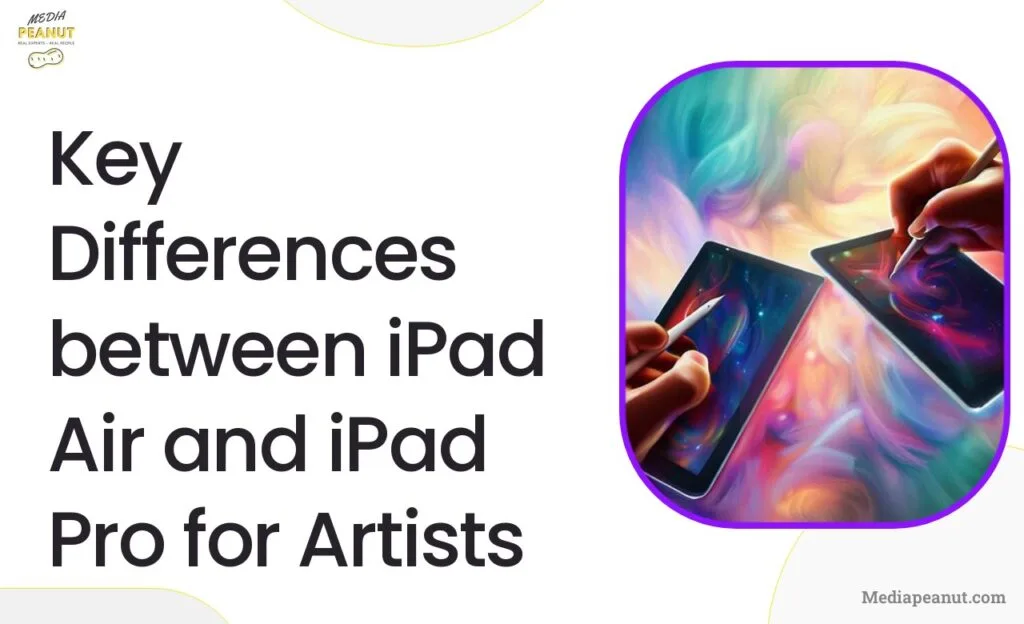
| Feature | iPad Air | iPad Pro (12.9″) |
|---|---|---|
| Display Size | Smaller | Larger |
| Battery Life | Shorter | Longer |
| Refresh Rate | Standard (60Hz) | ProMotion Display (120Hz) |
| Performance | M1 Chip (High-quality) | M1 Chip (High-quality) |
| Apple Pencil Support | 2nd Generation | 2nd Generation |
| Storage Capacity | Up to 256GB | Up to 2TB |
| Camera & Display Tech | Standard Camera & Display Setup | Advanced Camera & Display Setup |
Diving deeper into the specifications and features of the iPad Air and iPad Pro reveals several critical differences that could affect an artist’s decision. Although both devices are slim and lightweight, the iPad Air offers a more affordable option, while the iPad Pro boasts considerably more power and functionality.
The iPad Pro comes with a 120 Hz ProMotion display, making it a preferred choice among artists for its smoother drawing experience. However, the iPad Air offers a more budget-friendly alternative without significantly compromising quality.
| Image | Title | Price | Prime | Buy |
|---|---|---|---|---|
 | Apple iPad Air (5th Gen) | PrimeEligible | View on Amazon | |
 | Apple iPad Pro 12.9-inch (6th Gen) | PrimeEligible | View on Amazon |
Keep in mind that the processor powering the device plays an essential role in providing a seamless drawing experience. The iPad Pro’s M1 chip gives it a performance boost, but the iPad Air’s A14 Bionic processor is no slouch either.
Assessing each device’s performance can help determine which tablet meets your expectations in terms of processing power, display quality, and pricing.
Comparing Display Quality and Performance
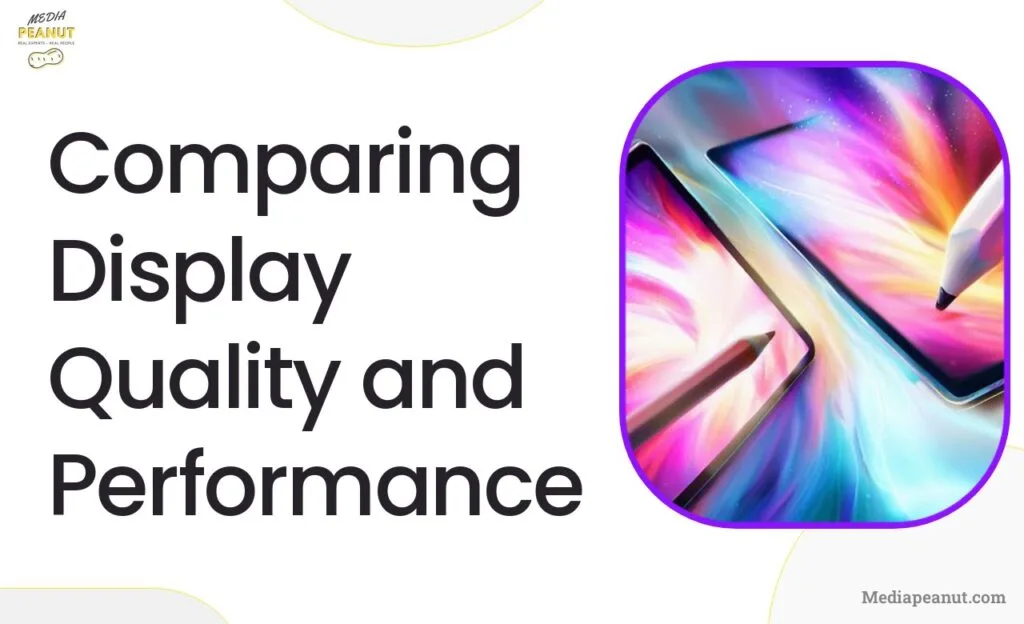
An artist’s best friend is a tablet with a high-quality display, offering crisp images and color accuracy. Comparing the iPad Air and iPad Pro, both devices boast impressive screens with minimal display differences.
Both tablets have a Retina display with a similar resolution and color gamut, ensuring excellent visual output. The key disparity lies in their screen refresh rates; the iPad Pro has a 120Hz ProMotion display, while the iPad Air features a standard 60Hz screen.
- One advantage for iPad Pro users lies in the device’s higher brightness, making it a more suitable option for outdoor usage.
- On the other hand, the iPad Air’s display has a slightly lower brightness level but still performs well both indoors and outdoors.
As an artist, understanding the contrast between the devices’ display quality can help in deciding which tablet better suits your needs.
ProMotion Display and its Impact on Drawing Experience for iPad Pro users

ProMotion technology is what sets the iPad Pro apart from the iPad Air and other tablets. With a refresh rate of 120 Hz, this feature doubles the standard refresh rate of 60 Hz seen in the iPad Air.
This higher refresh rate results in a smoother and more responsive on-screen experience, which directly impacts an artist’s drawing process.
ProMotion not only facilitates a faster response but also makes it feel more natural and akin to drawing on paper with an actual pencil.
Considering that not all artists require such immaculate responsiveness, the iPad Air’s standard display does an excellent job when it comes to drawing. For professionals who require the best possible drawing experience and can afford the price premium of the iPad Pro, the device’s ProMotion display is indeed a game changer.
Does iPad Air have Pro Motion display?
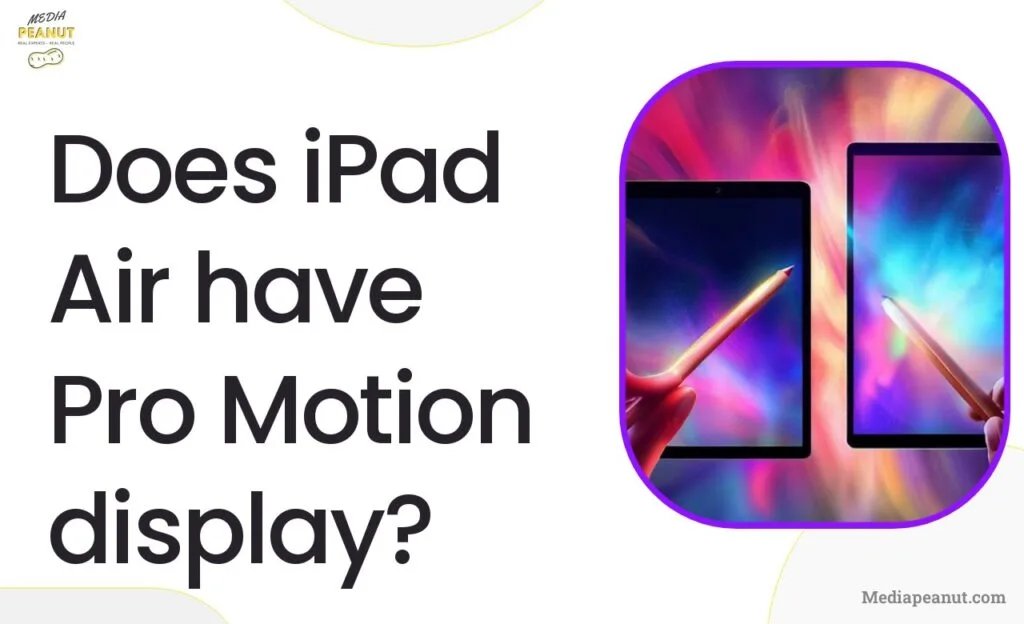
While the iPad Air is an impressive device, it lacks the ProMotion display that sets the iPad Pro apart. This means that the iPad Air is limited to the standard 60 Hz refresh rate instead of the 120 Hz offered by the ProMotion technology.
Although this does not entirely hamper the drawing experience on the iPad Air, it does make the drawing and writing experience feel somewhat less natural when compared to the iPad Pro.
Despite this, many artists will still find the iPad Air to be more than sufficient for their needs without shelling out the extra cash for the iPad Pro.
However, if you prioritize fluidity and natural strokes in your drawing experience, the iPad Pro’s ProMotion display is the way to go.
iPad Air vs Pro – Deep dive into the differences for drawing
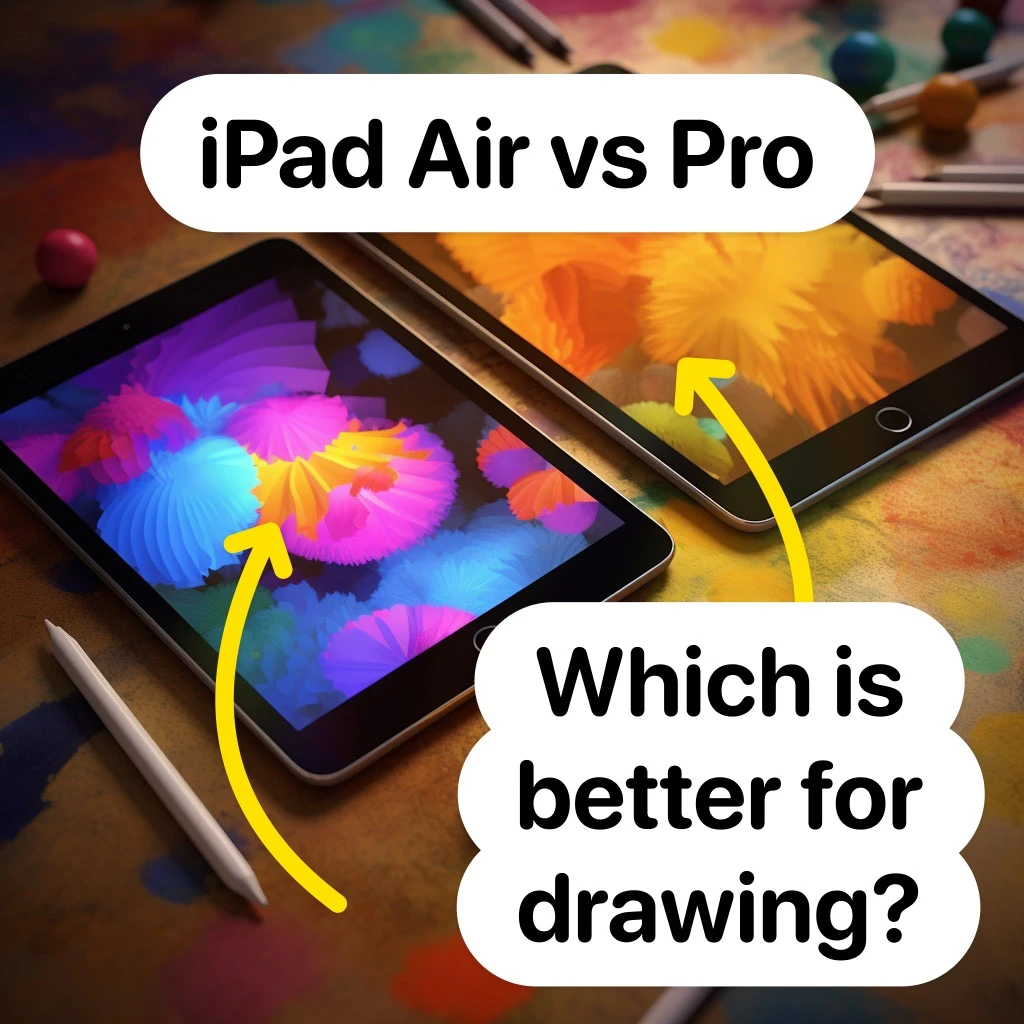
A Look at Pixel Density and Display Sharpness
When it comes to drawing on a tablet, display sharpness can play a vital role in your overall experience. Both the iPad Air and iPad Pro have identical pixel densities of 264 pixels per inch (PPI), which makes your drawing look sharp and highly detailed.
Comparing the resolutions of both devices, the iPad Air sports a resolution of 2360×1640 pixels while the iPad Pro 12.9 flaunts a slightly increased resolution of 2732×2048 pixels (source). Despite the minor difference in resolutions, the drawing experience remains consistently outstanding across both devices.
One advantage of having a high pixel density is that your artwork appears crisp and precise with vibrant colors and smooth line transitions.
The retina display technology found in both tablets results in realistic, high-quality visuals that enhance your artistic experience. Ultimately, both the iPad Air and iPad Pro provide artists with top-notch display sharpness that caters to all their drawing needs.
Apple Pencil Performance on iPad Air and iPad Pro
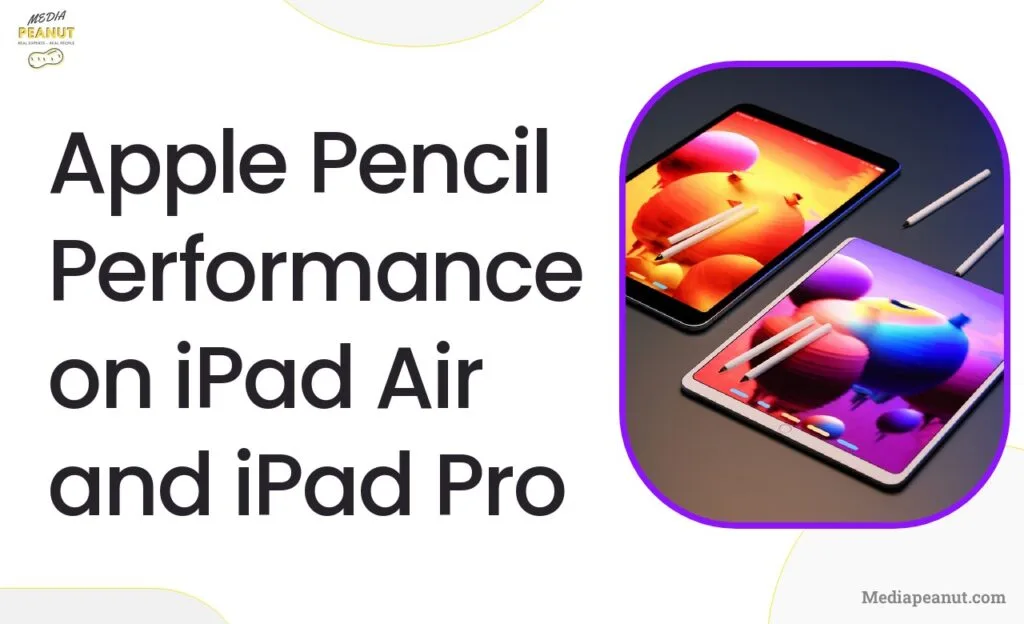
The Apple Pencil, specifically its second-generation model, is a critical component of the drawing experience on both iPad Air and iPad Pro.
The second-generation Apple Pencil offers exceptional precision, impressive pressure sensitivity, and accurate tilt recognition, which significantly elevate the quality of your drawings.
Keep in mind, both iPad variants support the second-generation Apple Pencil, and the drawing experience is almost identical on both devices. See our post on Which Apple Pencil works with your iPad? (Compatibility Chart)
However, the iPad Pro has a 120Hz ProMotion display that offers smoother and more responsive input, which translates to a more natural and fluid drawing experience.
This slight improvement found in the iPad Pro may appeal to artists seeking the most realistic drawing experience possible on a tablet.
Exploring Performance – The Role of Apple M1 and M2 Chips
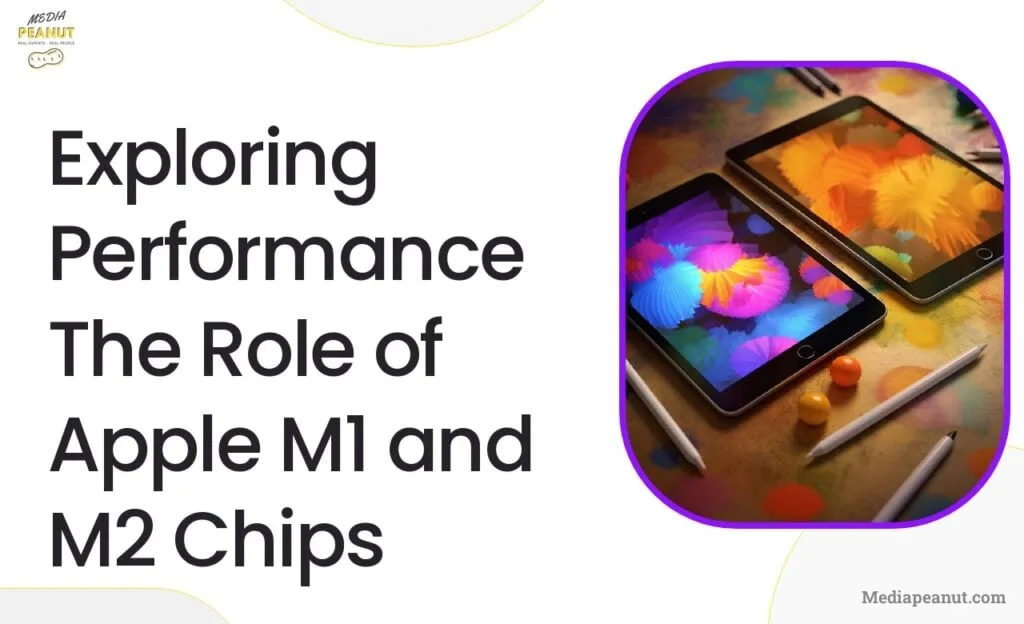
The performance of a tablet for drawing is significantly influenced by its processing power. The iPad Air features Apple’s M1 chip, which offers exceptional processing power that rivals many laptops. The iPad Pro, on the other hand, comes with the newer M2 chip – an upgrade that delivers 18-20% faster performance compared to the M1.
The power of these chips plays a crucial role when working on large-resolution project files with multiple layers, ensuring seamless operation even when using the most demanding brushes. While the iPad Pro’s M2 chip delivers slightly faster processing power, the iPad Air’s M1 chip is no slouch. In practice, both devices are highly capable of delivering outstanding performance for your drawing endeavors.
Choosing the Right Model – Storage Options and RAM
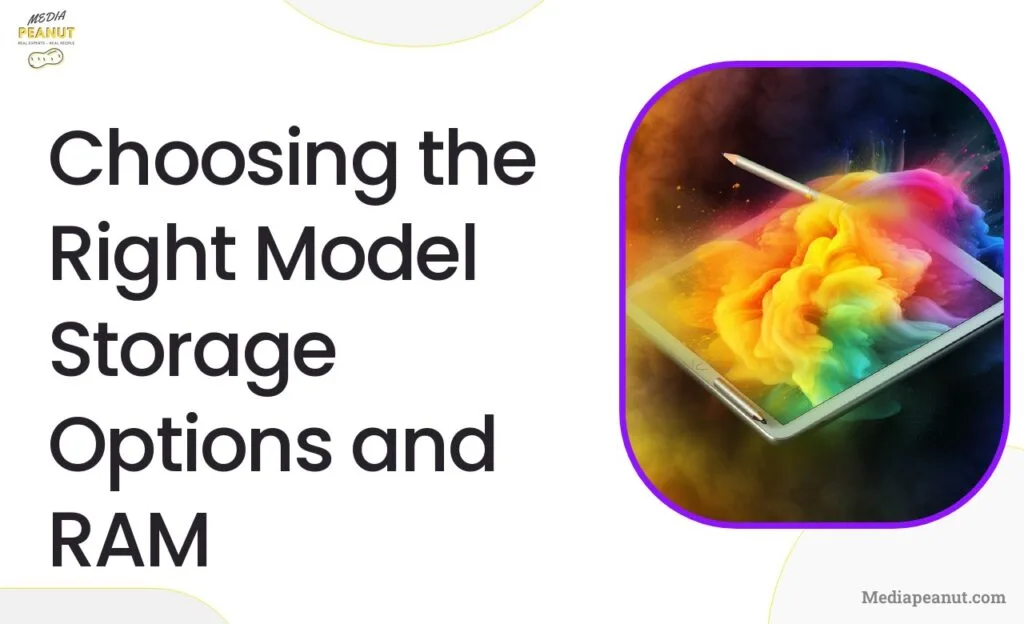
Selecting the ideal iPad model for drawing is often a matter of personal preference and requirements regarding storage and RAM capacity. The iPad Air offers two storage options – 64GB and 256GB – while the iPad Pro provides a wider range, starting from 128GB to a massive 2TB.
When it comes to RAM, both tablets come with 8GB, enabling seamless multitasking, multiple drawing layers on apps like Procreate, and smooth overall performance. Further, if you choose a higher storage model of iPad Pro with 1TB or 2TB capacity, you will get 16GB of RAM, which allows an even more powerful working environment.
As a side note, keep in mind that neither tablet allows expandable storage through a memory card. Consider investing in adequate onboard storage or make use of cloud storage options and external drives to cater to your storage needs. Ensuring the right balance between storage and performance will ultimately lead to a seamless and enjoyable drawing experience on either device.
Beyond Drawing – Cameras, Sound, and Connectivity
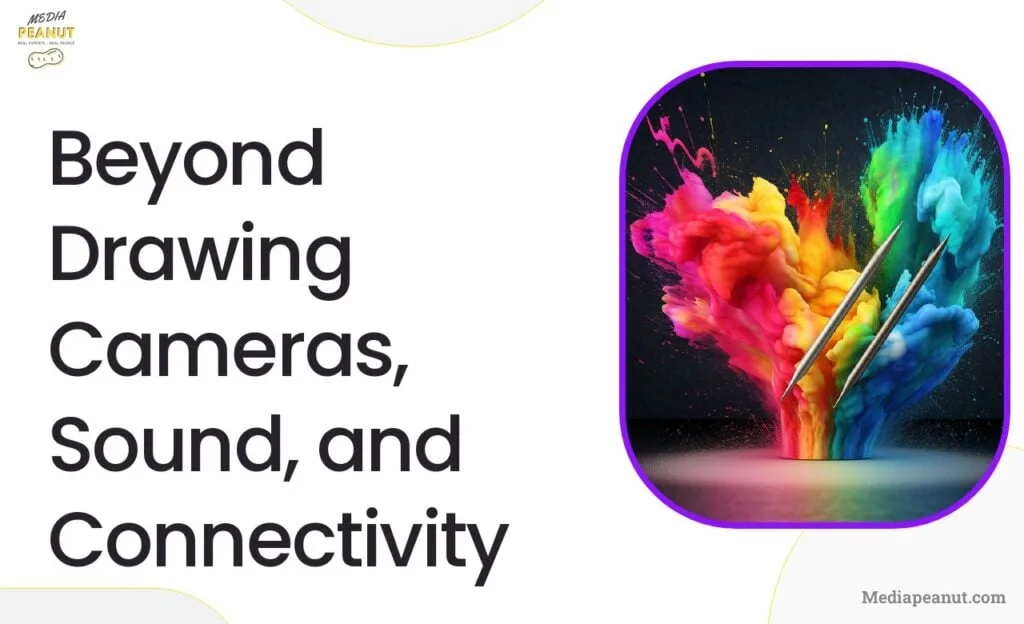
When considering an iPad for drawing, it’s also crucial to look at other essential features beyond drawing capabilities. Both the iPad Air and Pro have proficient cameras and sound systems that can influence the user experience. The iPad Pro comes with a triple camera setup, LiDAR sensor, and a more powerful quad-speaker system, ensuring better audio quality and depth sensing. The iPad Air, on the other hand, includes a single 12MP camera and a dual-speaker system. For those who need additional camera capabilities or better audio quality, it would lean towards the iPad Pro.
Moreover, connectivity is an essential factor in tablet use. The iPad Pro effortlessly connects to high-speed Thunderbolt and USB 4 peripherals. This advantage can be beneficial for transferring large files quickly and reliably, making it a more attractive choice for busy artists. The iPad Air utilizes a USB-C port, which is still superior to the standard Lightning port but not as advanced as the iPad Pro’s Thunderbolt option. Nevertheless, for users who can look past the slower transfer speeds, the iPad Air is still a reliable contender.
Side note: Both iPads have Wi-Fi and the option for cellular connectivity, which can be advantageous for artists on-the-go who need to stay connected while working remotely.
Portability and Usage – Evaluating Battery Life and Weight
The iPad Air and iPad Pro’s portability is determined by factors like battery life and weight. The iPad Air has a slightly higher battery capacity of 28.6Wh, while the 11-inch iPad Pro shares the same battery capacity. This results in a claimed battery life of up to 10 hours for web browsing and video playback. The 12.9-inch iPad Pro, being a larger device, has a 40.88 Wh battery, but the battery life remains around the same due to powering the larger display.
When talking about weight, the iPad Air is slightly lighter than the 11-inch iPad Pro, with just a few grams difference. The 12.9-inch iPad Pro is noticeably heavier due to its larger size and is more suited for artists who prioritize the larger screen over portability. Keep in mind that differences in weight might not be noticeable for most users, but for artists who work on-the-go and hold their tablets for extended periods, it could be a deciding factor.
Pricing Showdown – iPad Air versus iPad Pro
When choosing between the iPad Air or Pro for drawing purposes, the price is undoubtedly a crucial factor. The iPad Air starts at a lower price point compared to the base iPad Pro 11-inch, potentially making it attractive to artists on a budget. However, it’s essential to consider that the Air model with 256GB storage is priced closer to the 128GB iPad Pro 11-inch.
One advantage of going for the higher-priced iPad Pro is the more advanced features it offers. These areas include the ProMotion display, more powerful camera setup, and additional storage options. If the budget permits, artists who expect to use these features frequently could benefit from investing in the iPad Pro.
Accessories for drawing on the iPad
To make the most of an iPad for drawing, compatible accessories are essential. Both the iPad Air and iPad Pro support the 2nd generation Apple Pencil, which is well-regarded in the creative community for its responsiveness, pressure sensitivity, and tilt detection.
Furthermore, magnetic attachment and wireless charging make the Apple Pencil convenient to use and store.
Also see: 7 Best Adjustable iPad Stands
For a more comfortable working experience, investing in a keyboard case can elevate the iPad’s functionality. Both iPad models support the Apple Magic Keyboard, which includes a trackpad and a floating design for adjustable viewing angles. Don’t forget that there are also third-party accessories like drawing gloves and stands to optimize your drawing experience.
What is Pro Motion display on the iPad Pro and why is it good for drawing?
The ProMotion display on the iPad Pro is a notable feature that enhances the drawing experience. Essentially, ProMotion is a 120Hz refresh rate technology, which means the display refreshes 120 times per second.
This higher refresh rate improves the smoothness and responsiveness of the display, making it feel even more natural when drawing with the Apple Pencil.
For artists, the primary advantage of ProMotion is that it reduces latency or lag while drawing, thereby getting closer to the analog drawing experience.
Thanks to the ProMotion display, the Apple Pencil’s response time is reduced, ensuring that the virtual ink appears virtually instantaneously on the screen. This technology can contribute to a better user experience, especially for artists who need precision and fluidity when working on their digital creations.
Can iPad Air and Pro run the same drawing apps?
Yes, both the iPad Air and iPad Pro can run the same drawing apps. These tablets have access to a wide range of apps on the Apple App Store that cater to different artistic purposes, including sketching, painting, illustration, and graphic design.
All popular drawing apps, such as Procreate, Adobe Fresco, and Affinity Designer, are available for both devices.
Also see: Is Procreate worth it for Beginner Artists? (The Truth)
One advantage of having a compatible ecosystem is that you can easily switch between the two devices and continue working on your drawings without any lag or compatibility issues.
It is essential to make sure that your desired drawing app supports your tablet’s hardware, such as Apple Pencil compatibility and processing power. Keep in mind that newer updates of apps might require a more powerful processor, but both the iPad Air and iPad Pro have the M1 and M2 chips, ensuring they will run most drawing applications smoothly.
Side note: Since both devices run on iPadOS, they share the same user interface and functionality, providing a consistent experience regardless of choosing iPad Air or iPad Pro.
My Experience testing the iPad Air Pro on Procreate and Krita
While testing the iPad Air and iPad Pro on popular drawing apps like Procreate and Krita, I found that both devices performed exceptionally well. The Apple Pencil’s responsiveness on both devices was accurate and consistent, and there were no noticeable differences in overall performance.
During the tests, I experimented with various brushes and tools and observed that the iPad Air and iPad Pro handled complex brushes and large canvases gracefully.
Despite having a smaller screen size, the iPad Air provided a satisfying drawing experience, while the iPad Pro felt more premium with its ProMotion display and larger screen real estate.
Related: Krita vs Photoshop: Which software is better for artists?
In terms of app support, Procreate is often considered the top choice for iPad artists. Krita, on the other hand, is known for being a powerful, open-source drawing app available on other platforms.
While Krita is not natively available for the iPad, it’s accessible through the third-party app, Krita Gemini. Although Krita Gemini is a paid app, it brings the convenience and functionality of a desktop drawing app to the iPad platform.
Also see:How to get the Procreate App on MacBook
Storage Options: Choosing Between 128GB and 256GB
Selecting the appropriate storage option for your iPad depends on your individual needs and usage pattern. If you plan to use your iPad primarily for drawing and will not store many other files or apps, a 128GB storage capacity will likely suffice.
However, if you intend to install multiple large drawing apps, store high-resolution project files, or use your tablet for other entertainment and productivity tasks, consider upgrading to a 256GB or larger storage option.
One advantage of having more storage is that it can accommodate a more extensive library of art resources, such as custom brushes, textures, and reference images.
Keep in mind that iPads do not support expandable storage through SD cards. Thus, it’s better to invest in a larger storage capacity from the start to avoid running out of space down the line.
See the 7 Best Tablets with SD Card slot (Expandable storage) if you really prefer a SD card.
RAM: Impact on Multitasking and Layer Support
RAM plays a crucial role in multitasking and supporting more layers in drawing applications. Both the iPad Air and iPad Pro come with 8GB of RAM, which means you can expect your tablet to manage multiple open apps and drawing layers seamlessly.
Higher RAM allows drawing apps like Procreate to handle more complex tasks and larger projects with numerous layers. Layer limitations can inhibit the creative process, so having ample RAM ensures you’ll have room to explore and refine your artwork without constraints.
Side note: Heavy multitasking, such as streaming music while working in a drawing app, can affect iPad performance. However, the 8GB RAM found in both devices should handle these tasks without significant slowdowns.
Design and Weight: Portability Concerns
When choosing between the iPad Air and iPad Pro, portability and design play a significant role. Both devices have slim, sleek profiles that make them easy to carry and work with on-the-go. The iPad Air has a slightly thicker design at 6.4mm, compared to the iPad Pro’s 6.1mm.
The iPad Air is marginally lighter, weighing only 5 grams less than the iPad Pro. These differences are minimal, and their impact on portability and comfort while drawing may not be significant for most users.
For those prioritizing portability, both devices offer a compact design. However, if a larger screen is necessary for your drawing purposes and you don’t mind a slightly heavier tablet, the 12.9-inch iPad Pro might be a better fit.
Camera Features: Relevance for Creative Work
While the camera may not seem essential for drawing purposes, a high-quality camera can be helpful for artists who capture reference photos for their artwork. The iPad Pro features a triple camera setup, while the iPad Air comes with a single, 12MP primary camera. Both cameras are capable of capturing detailed photos and 4K videos.
The iPad Pro provides additional features such as a 10MP ultrawide camera and a LiDAR sensor for depth sensing. These additional features can benefit artists working with 3D design and modeling applications. Overall, both tablets offer high-quality cameras that can serve as useful tools for creative endeavors.
Bottom Line: iPad Air or iPad Pro for Drawing, Artists, and Graphic Design?
Ultimately, the choice between the iPad Air and the iPad Pro as a drawing tablet comes down to individual priorities and budget constraints.
The iPad Air offers a more budget-friendly option, providing a satisfying drawing experience and performance suitable for casual artists and hobbyists.
On the other hand, the iPad Pro offers premium features such as the ProMotion display, a more powerful M2 processor, and additional camera capabilities, making it an attractive choice for full-time artists and graphic design professionals.
As an artist, you should consider your priorities and if you really need a larger display or not for drawing… so screen size, portability, budget, and additional features should be considered for your workflow.
Both Apple devices provide exceptional drawing experiences and cater to various needs; so there’s no wrong choice between the iPad Air and iPad Pro for those looking to create stunning digital artwork.


